In this article, I’ll show you how to connect a PLC emulated in FactoryTalk Logix Echo to Factory IO to test a PLC program using a simulated factory.
If you’d prefer watching instead of reading, check out the video below. Otherwise, feel free to skip it and continue with the blog.
I’d like to take a minute to introduce the tools that we will use in this article, starting with Logix Echo.
Logix Echo
FactoryTalk Logix Echo is Rockwell Automation’s latest Logix 5000 PLC emulator.
Unlike its predecessor, Studio 5000 Logix Emulate, FactoryTalk Logix Echo emulates the ethernet port of an emulated PLC.
Using this feature, you can connect a PLC emulated with Logix Echo to other applications for simulation and testing.
In this article, you’ll see how to set up a controller in Logix Echo and download a Studio 5000 Logix Designer project to the controller.
Factory IO
Factory IO is a 3D simulation environment used for PLC training.
Factory IO features a library of components that can be used to build virtual factories and pre-built scenes that can be used for PLC training. These scenes can be connected to a PLC to test PLC code and to visualize how your code would control a physical process.
You can download a free trial of Factory IO using this link.
Now that we know what tools we’ll be using, let’s get started by setting up an emulated PLC in Factory Talk Logix Echo.
Connect Logix Echo to Factory IO
Set up Logix Echo
On my computer, I launch Logix Echo and add a new controller as shown here.
In the Add Controller dialog, I specify that I want to create a CompactLogix 5380 Emulate controller with the name FIO.
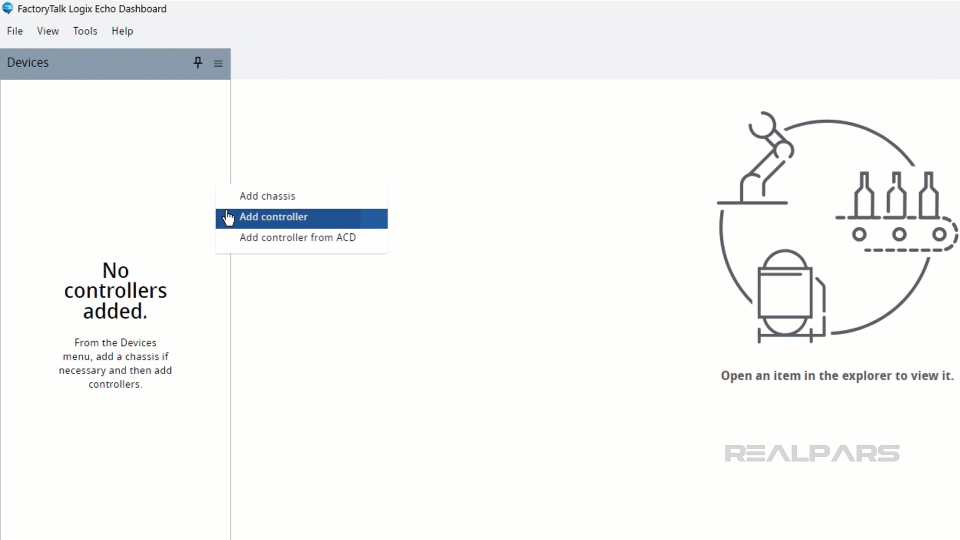
I also configure the IP address of the emulated controller to use the IP address of my computer. This is the address that the controller will use to communicate with Factory IO. Note that using the loopback address 127.0.0.1 is not allowed.
Finally, I click Add to create the emulated controller in Logix Echo.
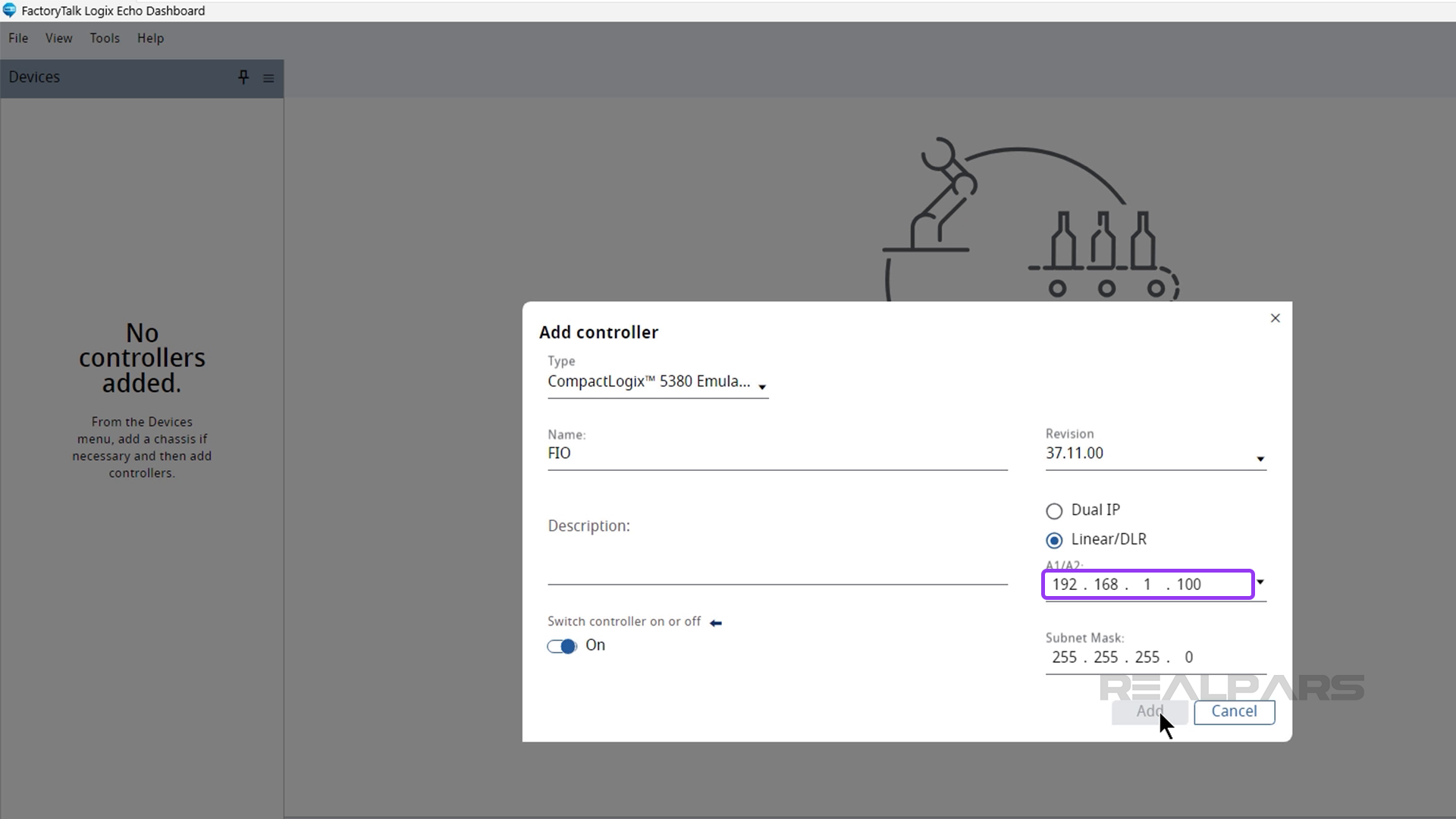
Create a project
Now that my controller is created, I switch to Studio 5000 Logix Designer and create a new project called FIO, as shown here.
I leave the default settings for the controller and click Finish to create the project.

In the project, I configure the controller to use the Linear IP mode to match the emulated controller in the Controller Properties dialog.

Configure tags
Next, I declare the tags that we will use in this project in the Controller Tags grid.
The names of these tags are aligned with the tags in the Factory IO scene that we will connect to.
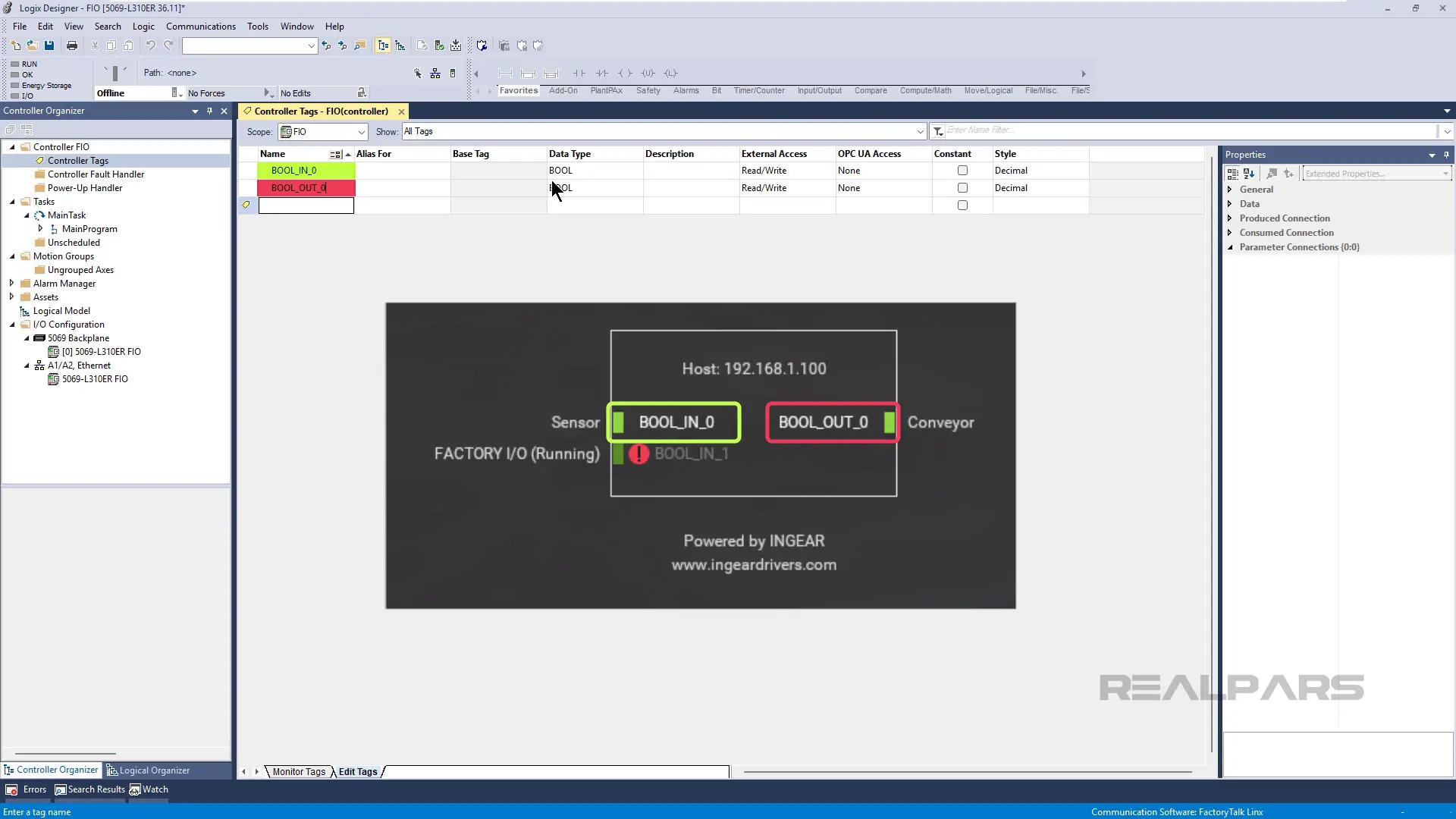
Write the logic
Once the tags are declared, I can write the simple logic to control the scene in the MainRoutine as shown here.
In this example, we want the conveyor to run if the normally-closed sensor is not triggered.
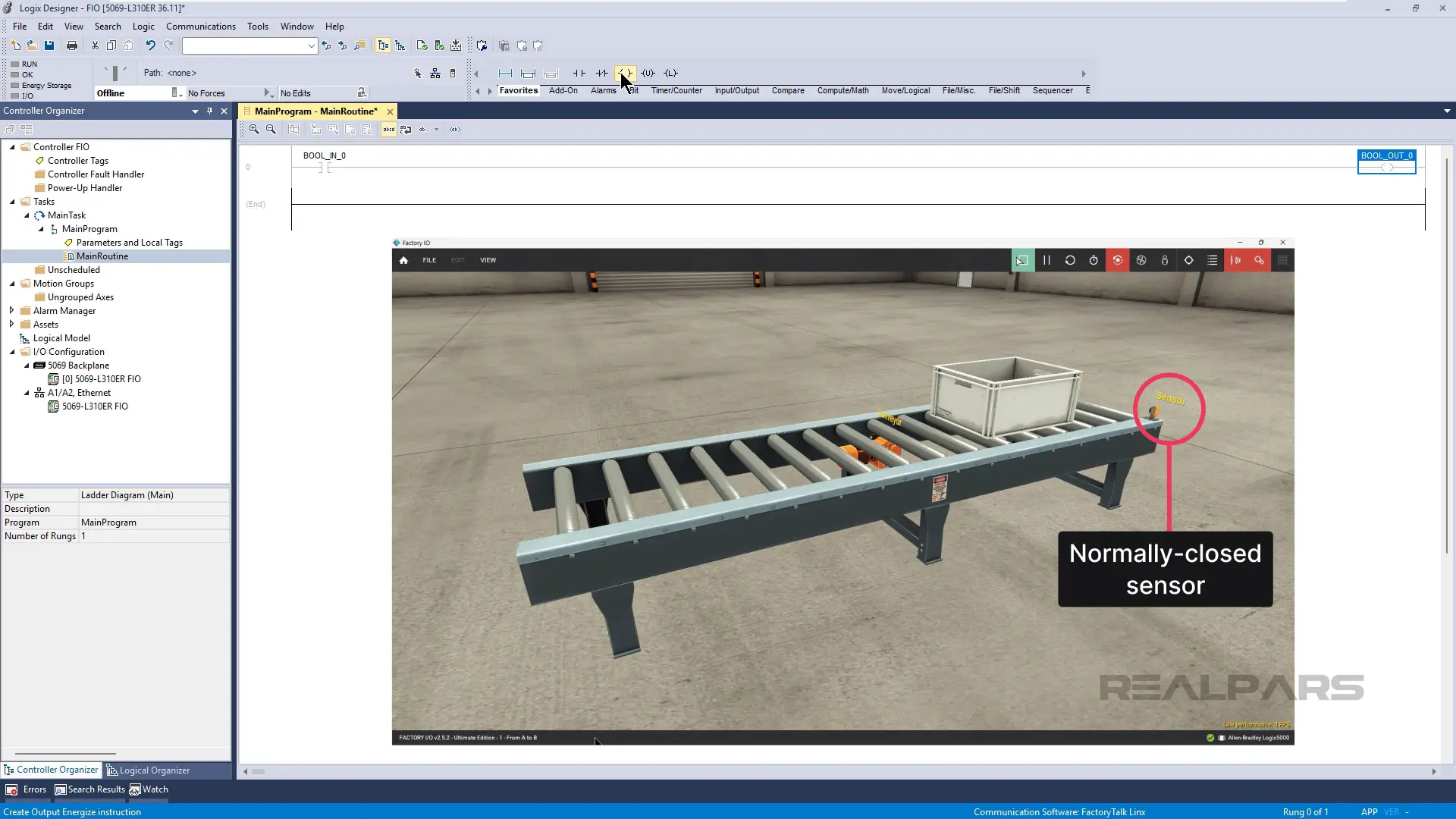
Download the project
Once the Studio 5000 project is finished, I can download it to the Logix Echo emulated PLC by opening the Who Active window, browsing for the controller, and selecting Download.
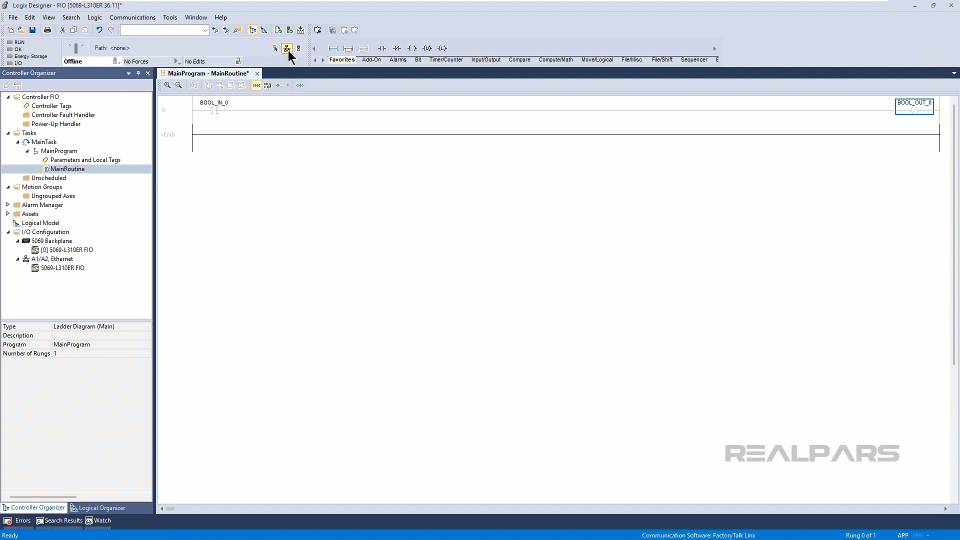
You should notice that the emulated controller shows up under the EtherNet/IP driver just like any physical controller on the local network would.
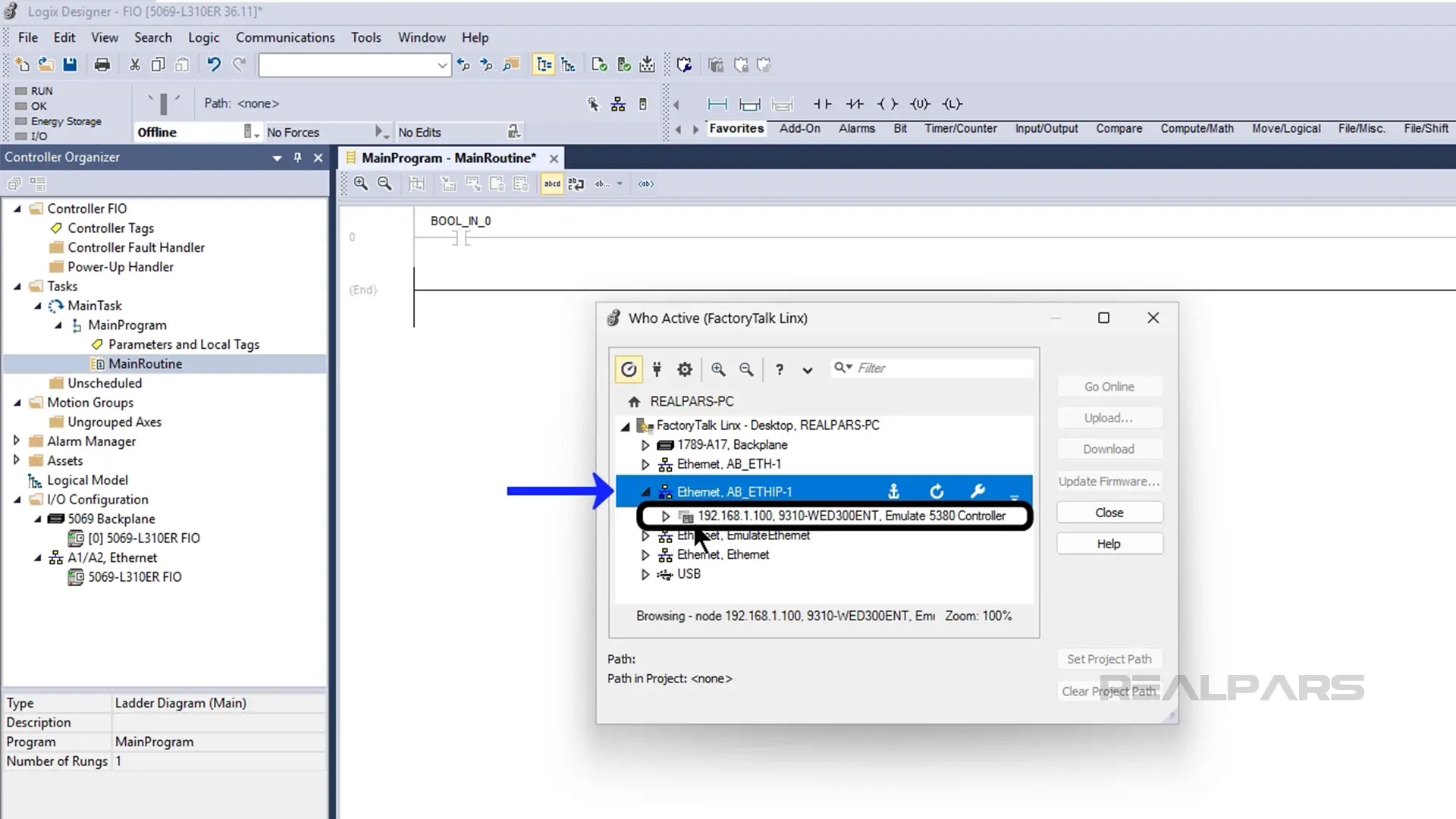
After the download has completed, I put the controller into Run mode to execute the project.
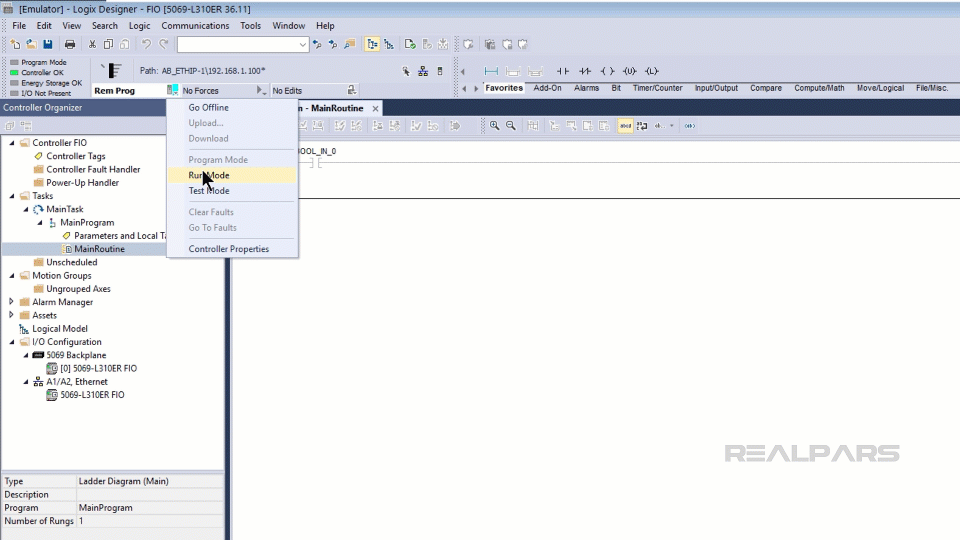
Set up Factory IO
In Factory IO, I have opened the scene “1 - From A to B” that we will use in this demo.
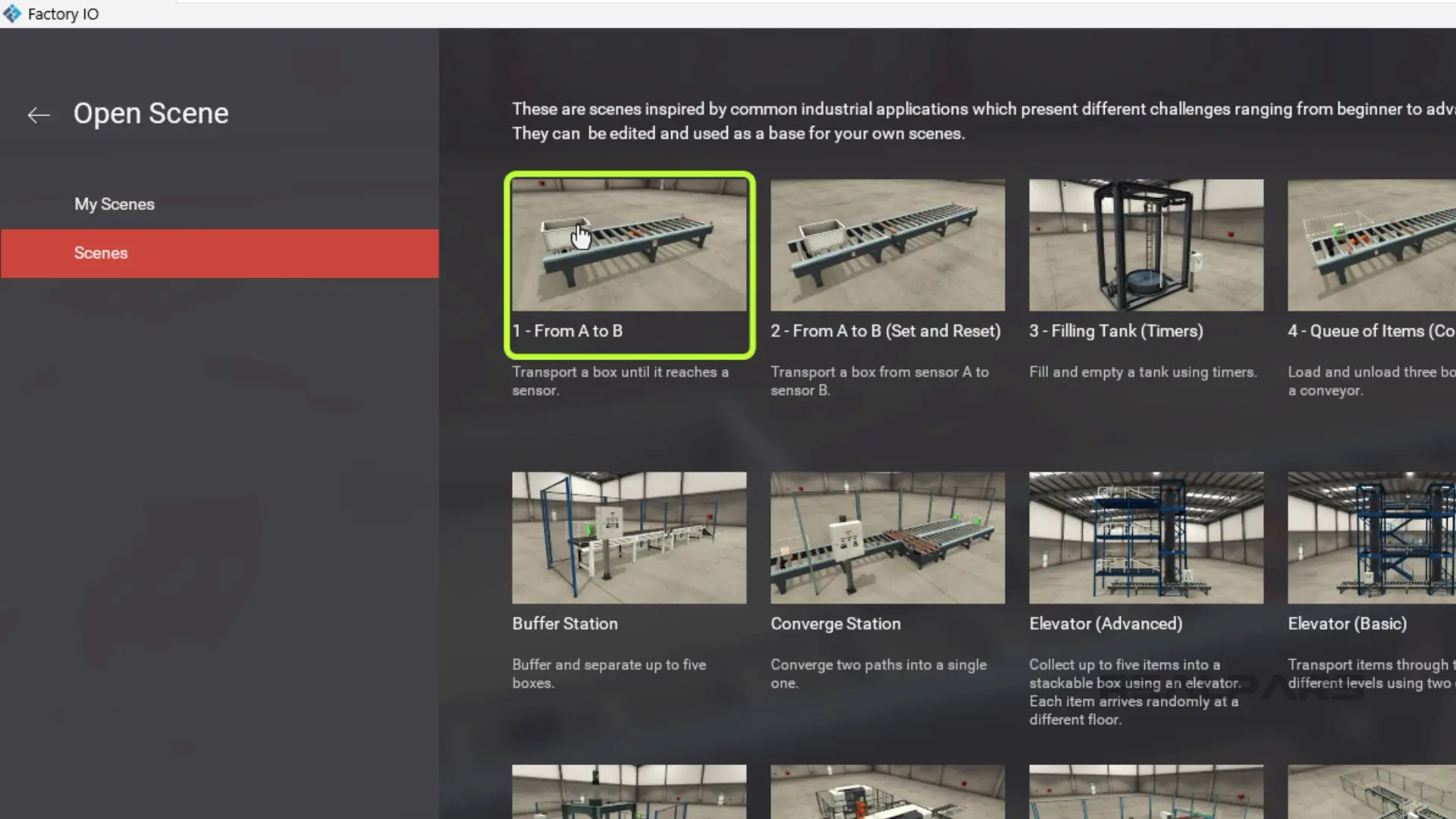
From the File menu, I select Drivers to open the Drivers window.
In this window, I select the Allen-Bradley Logix 5000 driver from the dropdown menu.
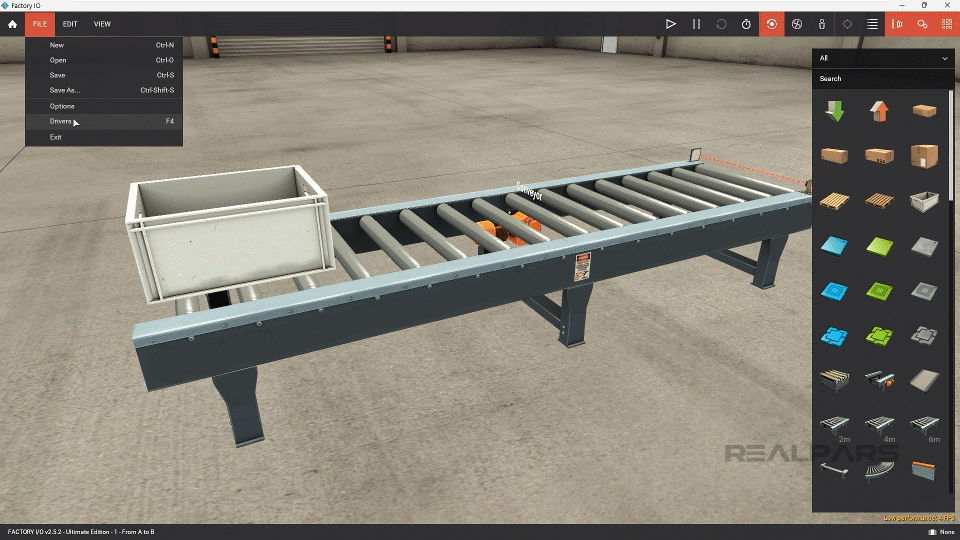
After selecting the driver, I click Configuration to open the driver configuration window.
In this window, I enter the IP address of the emulated controller, which is 192.168.1.100, and use the back arrow to return to the driver window.
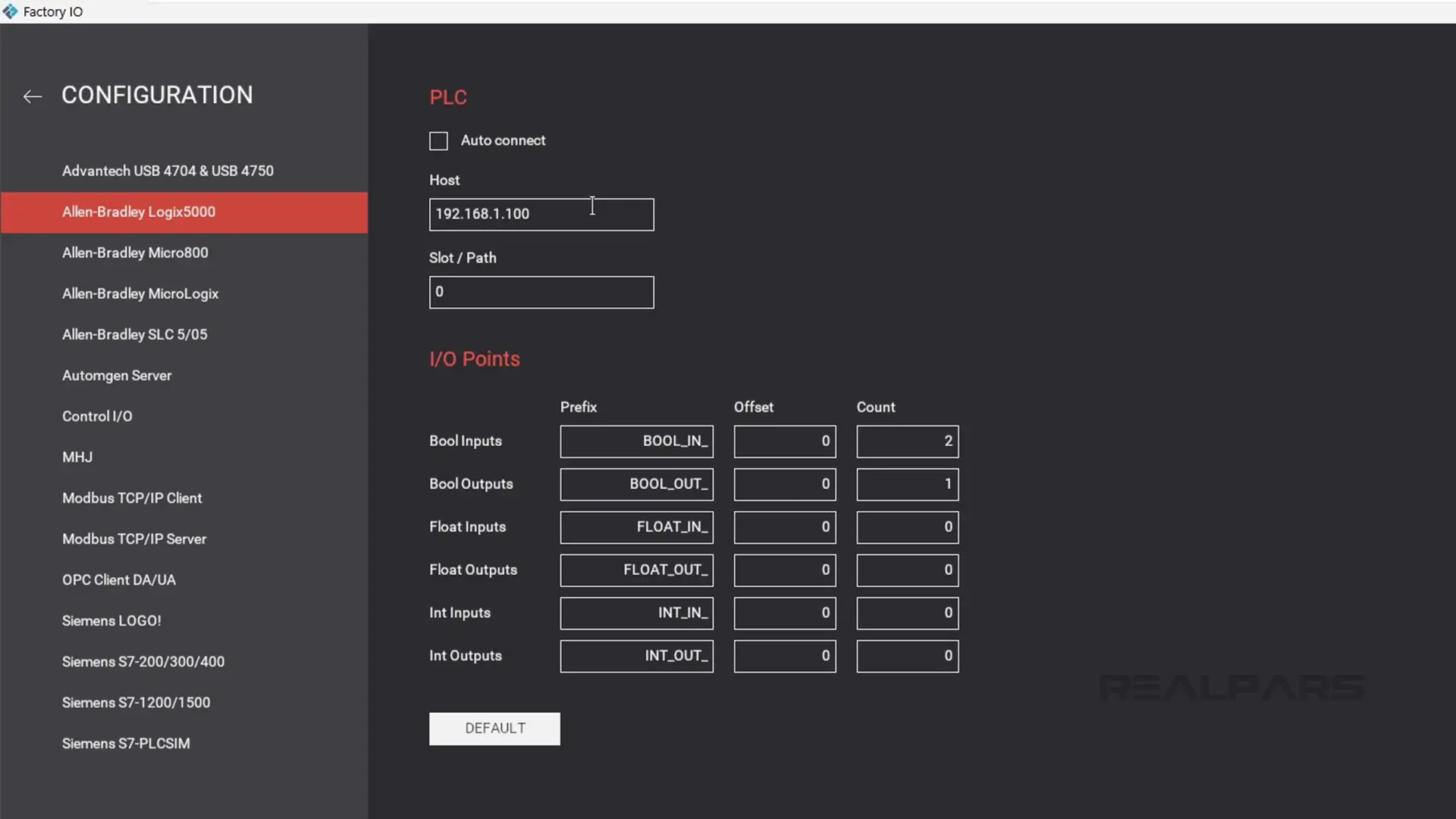
In this window, I click Connect to connect the scene to the emulated controller.
A green tick appears the driver to indicate that the connection was successful.
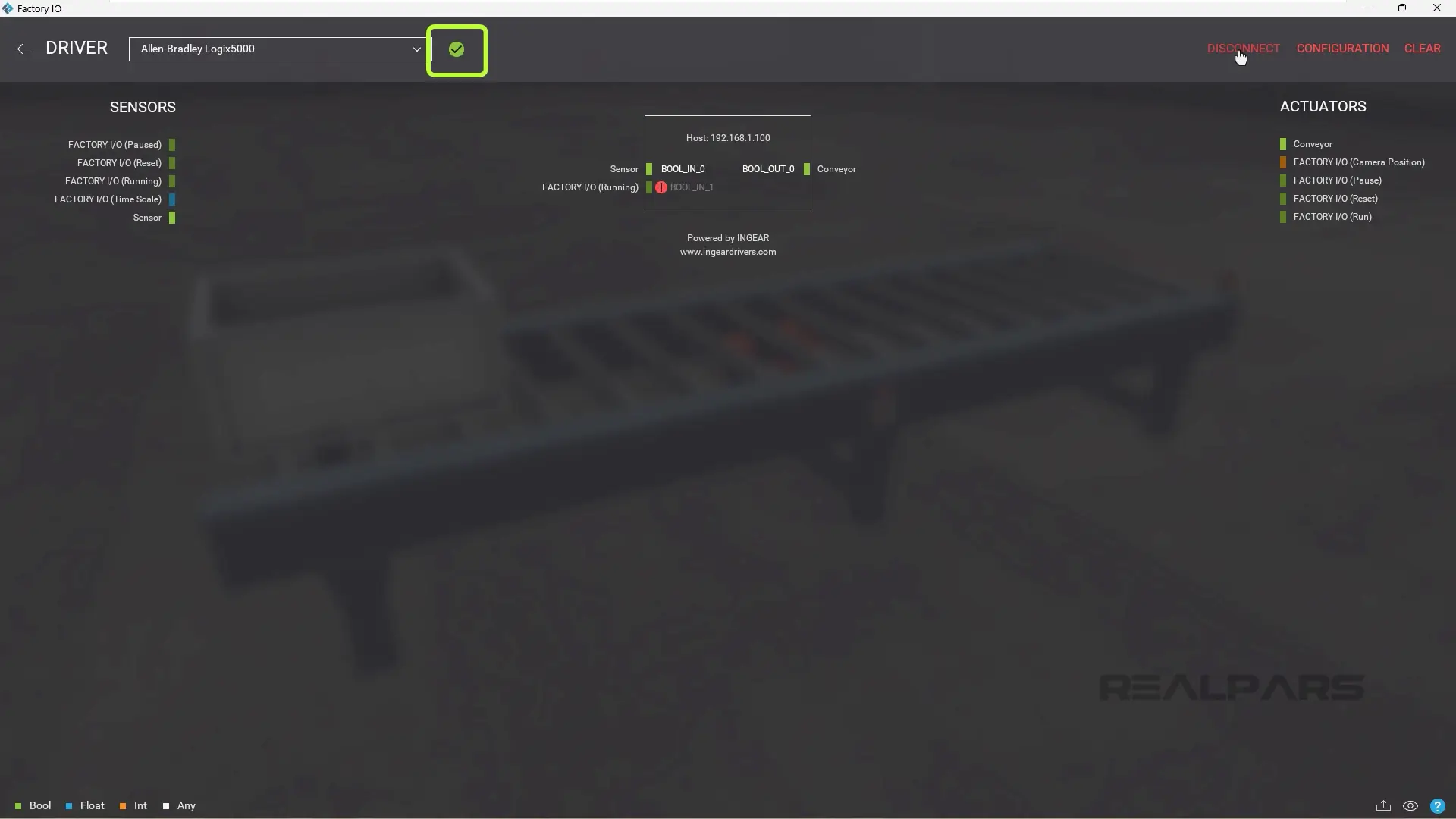
Now I can return to the scene and press the play button to confirm that my logic is working correctly. As expected, the conveyor motor runs until the sensor is triggered and stops.
Wrap-Up
In this article, I showed you how to connect a Logix 5000 PLC emulated with FactoryTalk Logix Echo to a Factory IO scene.
RealPars Business members get access to these courses along with 100 other high-quality courses that can be used to train your team on demand to improve productivity and reduce downtime.
Learn more about RealPars Business by visiting realpars.com/business.

%20(1).webp)